has 13+ years experience in web development, ecommerce, and internet marketing. He has been actively involved in the internet marketing efforts of more then 100 websites in some of the most competitive industries online. John comes up with truly off the wall ideas, and has pioneered some completely unique marketing methods and campaigns. John is active in every single aspect of the work we do: link sourcing, website analytics, conversion optimization, PPC management, CMS, CRM, database management, hosting solutions, site optimization, social media, local search, content marketing. He is our conductor and idea man, and has a reputation of being a brutally honest straight shooter. He has been in the trenches directly and understands what motivates a site owner. His driven personality works to the client's benefit as his passion fuels his desire for your success. His aggressive approach is motivating, his intuition for internet marketing is fine tuned, and his knack for link building is unparalleled. He has been published in books, numerous international trade magazines, featured in the Wall Street Journal, sat on boards of trade associations, and has been a spokesperson for Fortune 100 corporations including MSN, Microsoft, EBay and Amazon at several internet marketing industry events. John is addicted to Peets coffee, loves travel and golf, and is a workaholic except on Sunday during Steelers games.
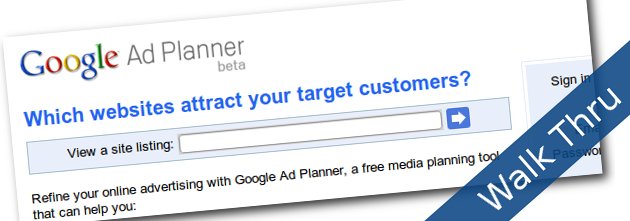
Online marketers and media planners know that there are a lot of challenges involved with creating a web advertising campaign and making sure that your adds are placed on relevant websites. It is important that you scale your ad campaign’s reach and keep it relevant to your target audience. You know there must be millions of sites out there that are prefect for your campaign, but how do you find them?
Google Ad Planner lets you research and locate websites with target audiences closely matching your ad target audience. This gives you two advantages: you will get a higher response rate for your ad campaign, and you’ll waste fewer marketing dollars on ads placed on irrelevant websites. Before going into detail about how to use Google Ad Planner, let’s review what a media plan is. To put it very briefly media plan is used to choose the ideal combination of media, reach, and budget for targeting ad placement.
 Google Ad Planner hooks up advertisers and publishers. To use Google Ad Planner, you enter demographics and sites that are associated with your target audience, and you’ll get back information about sites your audience is likely to visit. Those sites don’t have to be part of the Google content network. If you want, you can obtain more details on demographics and related searches for a given site, or you can add a number of sites to your media plan and get aggregate statistics for those sites you’ve chosen.
Google Ad Planner hooks up advertisers and publishers. To use Google Ad Planner, you enter demographics and sites that are associated with your target audience, and you’ll get back information about sites your audience is likely to visit. Those sites don’t have to be part of the Google content network. If you want, you can obtain more details on demographics and related searches for a given site, or you can add a number of sites to your media plan and get aggregate statistics for those sites you’ve chosen.
All this is very useful information for search engine optimization (SEO) as well. Once you find out demographics and related searches for a site, you have a better idea of what keywords are landing certain sites at the top of the search engine results. All you have to do is plug in the information you learn about related searches for a site, and then see which sites end up on top. That gives your site designers and content writers valuable information they need to help bring your site up to the top of the search engine results.
You can also use Google’s keyword tool to search top websites for keyword ideas. For example, the site hgtv.com ranks at the top of a search on “home improvement ideas.” By plugging the site’s address into Google’s keyword tool, you can get back a list of keywords based on information on that site, as you can see in the screen shots.
Google AdWords can also help you decide which keywords to concentrate on, and which ones probably aren’t worth your while. As soon as you put a keyword into AdWords, it gets a Quality Score based on that keyword’s performance for other advertisers. This first Quality Score is your keyword’s “base score.” If your keyword performance is better than this baseline, your Quality Score will go up. But if your keyword has a lower click through rate, your Quality Score will go down. A Quality Score of 9 or 10 indicates a very successful keyword for other advertisers, so you want to give these keywords more attention in using them in ad groups.
Google Ad Planner now includes Google Trends for Websites, a resource designed for media planners. With Google Ad Planner you can create media plans and export them to .csv files (openable in many spreadsheet apps). You also have the option of exporting to DoubleClick’s MediaVisor, an app that lets you manage your other media campaign and buying activities.
1. Look at your website analytics software (which might be Google Analytics or something else), conduct surveys, or research your competitors to learn your website’s target audience by age, education, gender, geography, income, and any other demographic markers you choose.
2. Sign up for Google Ad Planer if you have not done so.
3. Login to your Ad Planner account, and with the information gleaned from Step 1 on the type of person you want to target in mind, identify websites that are good fits and add them to your plan. You do this by clicking the “Ad to Plan” button.
4. Once you’ve chosen the sites you are interested in, you can export the data to your media planner app or spreadsheet so that you can contact publishers for advertising information.
You should keep in mind that Ad Planner is only for research and planning, the statistics they provide are estimates, and that you can’t use Ad Planner to buy advertising.

Here are a few more basic facts about the current version of Google Ad Planner. Its data comes from Google Search, Google Analytics, Feedburner, Adsense, Adwords, iGoogle, Toolbar, Maps, Blogger, Gmail, and Orkut. Some analysts believe that the data that is purchased by Google’s competitors may be more accurate than the stats that Google collects from its sources. Google’s data is estimated based on automated analysis of millions of queries and site visits and contains data from a 30-day window. Sites included in Ad Planner have to meet minimum threshold traffic criteria and other guidelines. Right now, Ad Planner is only available in English
Other tools you might be interested in include Google Trends for Websites (google.com/trends). This is what might be called a “lite” version of Ad Planner that can be used to help you plan your focus in Ad Planner. While it’s made for non-advertising users, it contains accessible demographic data in a less detailed form than Ad Planner.
Recent upgrades to Google Ad Planner can give users a more specific view of where to find their target audience. For example, subdomain data is now available and helps media planners refine their plans with statistics about specific pates on a site. You can search for subdomains, find out the top subdomains based on total domain traffic, and ad subdomains to your media plan.
Another recent upgrade is information about ad placements. This lets the advertiser know what sections of a website are selected for advertising (such as right hand column, under heading, etc.) This information is available for sites in the Google Content Network, and is available for some sites outside the network that use Google Ad Manager. You also get an interactive graph that lets you see which sites in your media plan give the best relevance and reach. Sites with the most reach are shown in the top left quadrant. Sites in the top right quadrant have the best combination of reach and relevance. This graph can be further customized.
Another useful development is that site owners and publishers can use Google Ad Planner to share more Google Analytics data points like page views, total visits, average time on site, etc. This gives media planners a better picture of how the demographics apply to specific sites so you can make better decisions about which sites to include in your media plan.
From the point of view of the publisher or site owner, this is a great development because it allows sites to be indirectly “pitched” based on the reader demographics. The Publisher Center lets site owners and publishers showcase their sites to advertisers. Publishers can now claim subdomains to give advertisers a more in-depth view of their sites for media planning purposes. Site owners can now share page views, unique visitors, average visits per visitor, and average time on-site. Publishers can now display badges for advertisers to click on. Advertisers can click on a badge to go directly to a publisher’s Google Ad Planner site profile, where there is a wealth of traffic and demographic data available.
Overall, the reviews of Google Ad Planner are good. The service is fast, free, and uses detailed filters. It doesn’t, however, filter results well sometimes, and will offer up sites that are not good fits and would probably not be top choices for specific advertisers. However, site targeting for media planning is young compared to data on television, newspaper, and other media. Google hopes to score another win for free information by bringing together advertisers and publishers in such a way that both sides benefit.
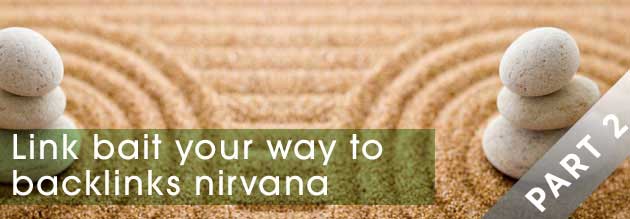
In part one of this post series – introduction to the linkbait concept, I explained the concept of link bait was a derivative of Viral marketing. While link bait campaigns aren’t as resource intensive as viral campaigns; they do still require a creative process of planning, creation and distribution. In part two of link bait your way to backlinks nirvana, we are going to explore the various elements that make up the framework to a great link bait. Each element is an important factor that contributes to the success or failure of your linkbait piece.

Link bait content should be hosted on the website you are trying to optimize for, often on a page of its own or a company blog. This is one of the key differences between viral content versus link bait content, by hosting the link bait on your website – you are utilizing all of the possible benefits from the links generated to the domain. ( Hosting the content on a new domain than using a 301 afterwards can work, however this technique can take more time and effort and is more closely related to full viral campaigns )
What format will your link bait be presented in? Is it a video, text, photos or a multimedia flash? When developing video content, remember videos and other content hosted on websites such as youtube will not get you the backlinks you want in a linkbait campaign, even if you use the embed function on your website. Why? simply because people are used to and prefer sharing URLS from youtube.com. So if at all possible, host the video on the your own website.
Youtube videos – If you must host video content on 3rd party provider websites, make sure you include some sort of call to action to visit your website on the video. Youtube now lets you add caption overlays, a call to action would be something like “Find out how we made this video – click here” or “To comment on or share this video, click here”. There’s no guarantee the user will click on the caption, but its your best bet to redirect the traffic back to your website. Bare in mind these caption links carry no weight for your search engine optimization efforts as they are embedded links.

Arguably the most important factor, the title needs to grab the attention of the potential reader / linker within the first few precious seconds, enticing them to read the article. The title should trigger some type of strong emotional response based on your content. In link baiting there are two types of headlines to consider, both should be as similar as possible .
The onpage title / headline – On the website where the linkbait is hosted. The page title should contain keywords that you want to SEO for, most SEOs also agree your H1 should also contain the keyword. When it comes to sharing and linking to your link bait; often people will use the onpage headline as the links anchor text, thus by having a keyword rich headline will generate maximum SEO results. Now what if your linkbait is not directly related to your keyword? Thats OK, make the title and headline as natural as possible because if it does feel un-natural smart surfers will call you out on the social networks, and your linkbait may fail as a result.
The distribution headline – It is also important to create 2 or 3 variations of your title for the different social media distribution channels, based on their reader demographic. Spend some time researching the popular titles on Digg, reddit etc, and soon you should see some sort of pattern emerging. It might be some common adjective words such as cool, biggest, or awesome for example.
If your link bait is based around a list, your distribution headline could read ‘ The top 10 most luxuries private jets in the world ‘ or for a more controversial headline try; ‘ 10 luxury private jets you can never afford ‘.

The URL should be in human readable format EG http://www.interbent.com/star-wars-street-art-humor/ – preferably the same as the onpage title and hopefully include your SEO keyword. If you are using a content management system that does not generate friendly URLS, it will be worth the extra effort to setup URL rewrites to get a friendly URL. Why? because people trust URLS that tells them about the content which makes it more shareable and having a friendly URL also increases your SEO efforts if the URL contains your SEO Keyword.
Shortened URLs – Shortened URLs let users share your link bait via micro blogging services such as Twitter. Make sure you choose a URL shortening service that uses 301 redirection such as Bit.Ly, that way links will pass the link juice. Its also important to track how these shortened URLS are performing, Bit.ly offers pretty good data analytics, which you can research where your links are coming from. Read our guide on using Bit.LY for data research.

Understand that people visiting and linking to your link bait most likely won’t know about your business or website. So if your site template includes a lot of navigation / product menus, or any other elements that could be distracting to the potential link mob it might be worth considering a no-frills template / special landing page for the link bait. What you want is a fast loading page where the headline and part of your link bait ( images, videos, text ) is above the fold. By doing this you won’t scare off any potential linkers by thinking they have landed on some corporate website or shopping site.
Remember: the link bait is all about making the user feel comfortable enough to link to content, it is not about brand recognition or plastering the page with ads.

People are lazy, so make it easy for them to share your linkbait. If you are expecting the majority of traffic to come from Digg or Twitter than putting the Digg and tweetmeme icons above the fold is a good idea, otherwise just below the main content above the comments or in a sidebar will work fine.
Also adding some simple call to action such as the example seen below can also work great, its pretty obvious stuff but helps to catch that extra one or two links.
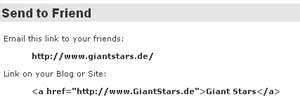

Enabling comments is often a good way to generate more interest to your linkbait, if you are already using a blog this should be an easy process. If you not using a blog platform, there are some very good and cheap comment scripts available to download, just Google it.
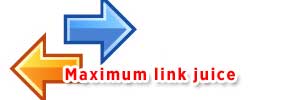
The point of the link-bait is to generate links, but the links to the linkbait page itself is not going to do much in terms of targeting your keyword. So a little bit of clever sculpting is required to take in the full benefit. Remember Google discounts the links contained in menus and footers so the optimal strategy is to include an honest disclaimer / message either before or in the middle of the content. Be upfront and honest, something like this will work:
” This hilarious post was brought to you by the good people at website.com, we make keyword 1 and Keyword 2 – which we think is a pretty cool product because ( insert content related to your keyword ) “
Setting up links from a related posts or articles table is often a good option as well.
Link the keywords to the homepage or whichever page you are trying to optimize the keyword for. Never use hidden text or super small text to try and hide this and remember the more outbound links you place on the page, the less powerful it becomes, there is no need to link to everypage on your website, pick the top 2 – 5 pages you have already done the SEO work on to link to.

Step 1 – Put on your best social media marketing hat and distribute your linkbait through the usual social bookmark channels, if you are planning to produce linkbait on a regular basis, there are plenty of online services that can help you distribute your linkbait to save you time. It’s important to understand the link herd mentality on social media sites, a fresh account with no reputation will not get much attention, even if the content is great. So it is important to distribute your piece through a well established account. If this is not possible, you can always find people / companies that will distribute the piece for you for a monetary return.
Step 2 How to get the real juicy links – Put on your creative hat and hunt down websites and blogs manually that are related to your linkbait and contact them directly, in particular if the piece has educational value, make sure to contact authority figures and educators directly. For example if your topic is about astronomy, email the professors and tutors directly, don’t bother emailing generic addresses such as “info@”, these will be flagged as spam and deleted. Also don’t forget to also contact your local journalists, often they are looking for interesting / off-beat topics to fill in the gaps, you might just land yourself a great link from a authority news site.
Link building is one of the hardest and most valued service in search engine optimization today, using link bait can give you an edge when it comes to negotiating and generating links for you and your client.
If you are an SEO, remember your clients business may not be glamorous or interesting enough to generate viral links, so using your creative skills to come up with a linkbait idea and following the tips above can work very well, often a client may not be comfortable with the idea of linkbait at first, but if you have done your research there are always good examples to present to them, even better if you can find a linkbait example by their competitors.
If you are a webmaster or website owner thinking about linkbait link building, you are in a good position to test and trial these techniques. Linkbait, like viral marketing can sometimes be hit and miss, don’t get discouraged if your first few attempts don’t work out. With practice you will get better at building link-baits and coming up with link-bait ideas.
Which leads me to the final chapter of our guide – Developing the perfect linkbait idea / topic. Please subscribe to our RSS feed or follow us on twitter @little_engine to be notified when the final part of our guide is online.
Having used Google’s Website Optimizer for client’s before, I thought we would share our experience from this week when we decided to run some experiments for the li’l engine blog – running WordPress version 2.8.
Google Website Optimizer is a free hosted service by Google that allows SEO’s and webmasters to perform content / layout tests on their website. For example, you may have a button on your website that reads “sign up” but would like to know if “Sign up Now” or “Join Now” would convert better. Using website optimizer one can setup an experiment using Google’s javascript to test the conversion rate of each button. There are two types of experiment available in website optimizer; Multivariate experiments – which runs up to 8 different sections / parts on the same page and A/B experiments which simply serves up different versions of the entire page.
Watch the stream live from the FTC 2 day workshop titled ‘ How will journalism survive the internet age? ‘ from Washington DC. Questions will be taken from @ftcnews during the Q & A session.
(more…)
Li’l Engine is proud to introduce the new Link Report Tool, a free search engine optimization tool developed to help SEOs and webmasters to identify the link landscape of any web page.
The link report tool uses Javascript technology to crawl through any webpage and creates a report on the various types of links on the page.
The tool will identify the following link types along with their anchor text;
(more…)
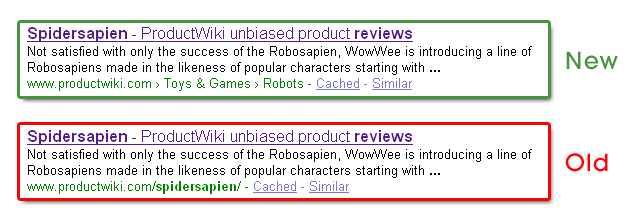
Google's new SERP URL update
Over the next few days we should see some changes in the way Google displays the URLs in organic SERP. Currently the URL listed in the search result is a citation based version of a page’s URL. It looks like this update is could be part of the Caffeine rollout, where Matt Cutt’s mentioned will only be rolled out on 1 server currently until 2010 – I am seeing the new breadcrumb result about 10% of the time when search for the phrase ‘spidersapien reviews’.
(more…)
Are you a Google affiliate publisher? If so and you haven’t logged into your account for a while, make sure you log in and select your payment preference in the Adsense dashboard or you might not get paid by your regular date.
Google announced this on the GAN blog today:
Affiliate publishers have new payment options through the integration with AdSense. As we head into the busy holiday season, please take a few minutes to check on the status of your payment preferences.
Publishers can view payments that have been posted to your AdSense account in the Google Affiliate Network platform; on the “Home” page click “Payments.” This view captures all payments and a detailed breakdown of your earnings per advertiser.
Payment information is stored in your AdSense account and Google lets you select your desired form of payment. Publishers can currently choose to be paid by electronic funds transfer, check, Western Union Quick Cash or Rapida. Check out the Help Center for a detailed overview your options.
Note if you see a message in your AdSense account prompting you to complete your payment information, it’s important you act quickly. This message means that there is some information missing in your payment profile and action is required to avoid payment delays.
Since Google integrated Adsense with Google Affiliate network there has been reports from a lot of users with difficulties in the transition, our recommendation is that you log into your account immediately and check for any system messages. If you have a problem, try emailing Google support first than try the GAN forum.
As you can see, there is a fair bit of user problems associated with the switch over in the forum. Hopefully Google will sort this out for their users soon.

News Corp Vs Google
An epic battle is brewing between Rupert Murdoch’s News Corporation and Google, as early as next month we could see News Corp controlled websites disappear from Google’s search results. It all started when Google began to index News Corp websites such as the Wall Street Journal / Fox news and returns to the minute results in Google News Search.
There has been a lot of commentary and discussion between the News Corp supporters and Google supporters, the case has been made by News Corp that Google is stealing content from their websites and basically not paying them for it, Google has not provided an effective business model for these websites to benefit from having their content on Google News.
What has baffled a lot of people is, why doesn’t News Corp simply block access to its websites from Google? Danny Sullivan of SearchEngineland describes in this great post.
Any webmaster worth a decent salary should know how to implement robot.txt and rel=noindex, I can not believe a large corporation like News Corp can’t just set this up. The reason? because News Corp doesn’t want to loose out on the massive free traffic from Google!
(more…)

Introduction to the Link Bait concept
The art of link bait is a combination of creative ideas and great execution; the term linkbait itself refers to the act of creating content for the purpose of acquiring links to a website to increase its search engine rankings. The content itself is considered as ‘ the bait ‘ , which the SEO hopes to catch ‘ links ‘ from websites of value.
One of the most powerful and organic methods to generate contextual backlinks is by the way of link bait.Through this post I hope to share with you the basics of link bait techniques from idea to execution.
(more…)

caffeine roll out planned for 2010
The Google Caffeine sandbox has been switched off today, replaced by this message.
We appreciate all the feedback from people who searched on our Caffeine sandbox.
Based on the success we’ve seen, we believe Caffeine is ready for a larger audience. Soon we will activate Caffeine more widely, beginning with one data center. This sandbox is no longer necessary and has been retired, but we appreciate the testing and positive input that webmasters and publishers have given.
Thank you – Google
So it looks like Google is finally rolling out the Caffeine updates into its live search, with the holiday season approaching Google has put webmasters and SEO’s mind at ease by deciding not to roll out the changes until January 2010, as confirmed by Matt Cutts, the head of Google’s webspam team on his blog today.
Some key comments from his post regarding Google Caffeine;
1. I know that webmasters can get anxious around this time of year, so I wanted to reassure site owners that the full Caffeine roll out will happen after the holidays. Caffeine will go live at one data center so that we can continue to collect data and improve the technology, but I don’t expect Caffeine to go live at additional data centers until after the holidays are over.
(more…)